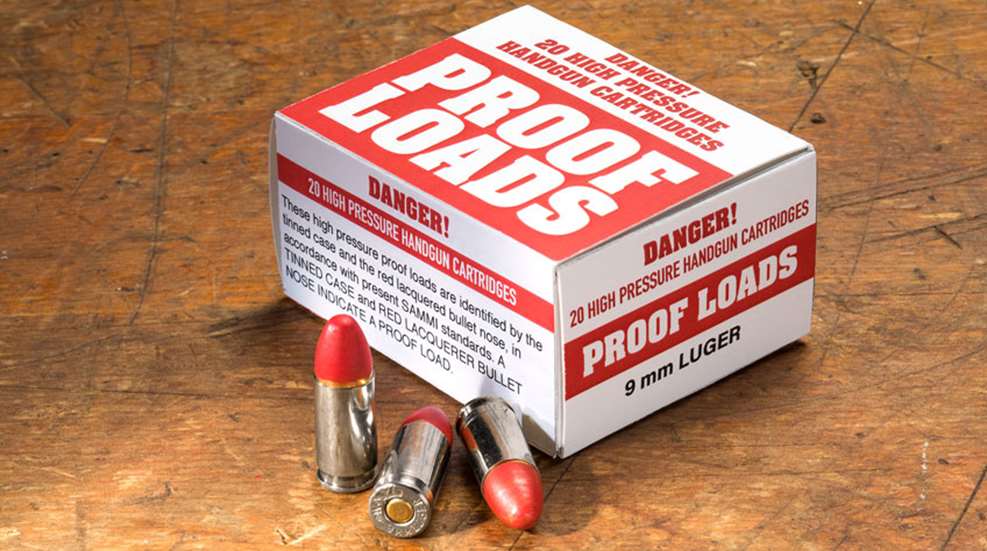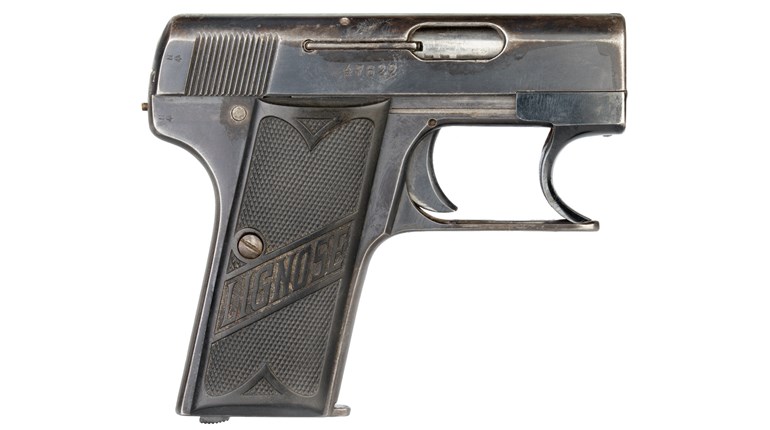
Loaded to as much as 30 percent more than industry standards, high-pressure proof cartridges are utilized by firearm manufacturers as a means of ensuring a gun’s structural integrity.
Jerome Morris
Pottstown, PA
Proofing—as the term pertains to firearms—refers to the test of a fully assembled firearm or component of a firearm with a high-pressure cartridge, or series of cartridges in the case of a revolver, that can be as much as 30-percent higher pressure than the recommended industry safety standard for a given round.
It is essentially a stress test on a firearm or component of a firearm by firing one or more “proof cartridges” to ensure the structural integrity of the gun or part being tested. Once the proof cartridge or cartridges are fired, the gun is inspected to verify no damage to any of the parts of the gun has incurred. If none was sustained from the proofing procedure, the firearm is deemed mechanically sound and ready to enter the distribution chain.
Depending on the manufacturer and/or country of origin, the frame, barrel and slide of a pistol may be stamped with a mark signifying successful completion of the test procedure. Other firearms may have proofmarks stamped into the frame and/or the barrel by itself.
In some cases, only the barrel is tested since it is the primary component containing the pressure of the ammunition. This is usually done in product designs that have a history of durability and reliability as a cost-saving method of manufacturing.
In addition, barrels that have quick-change or drop-in capability in multiple frames are usually proofed individually and are stamped in a conspicuous location as verification that they have been tested.
When proofing a complete firearm, the whole gun must be placed in an enclosed fixture and triggered remotely for safety purposes in case of a failure during the discharge of the high-pressure ammunition.
Proofing a barrel individually is much simpler, even though it, too, must be tested in an enclosed fixture for safety in the unlikely event of failure.
The time it takes to proof a barrel by itself as opposed to a whole firearm is significantly less. From an economic perspective, this is the best option for manufacturers to take without compromising safety.
Generally speaking, once a firearm has been proofed, it is proofed for the life of the gun unless some major changes have occurred to the parts managing the pressure of a cartridge when fired. A gunsmith restoring or rebuilding a gun may have the occasion to re-proof a firearm, but for the average gun owner it should not be a particular concern.
Added to that, proof ammunition is highly regulated and generally unavailable to those who do not either manufacture or remanufacture firearms.
While not dangerous in highly specialized, extremely limited use, prolonged firing of proof ammunition would be harmful to the gun and therefore detrimental to both shooter safety and his or her investment.
It sounds like you are serious about taking care of your equipment. Proper cleaning and lubrication as well as using quality ammunition in your pistols and other firearms will keep them functioning properly for generations to come.





































